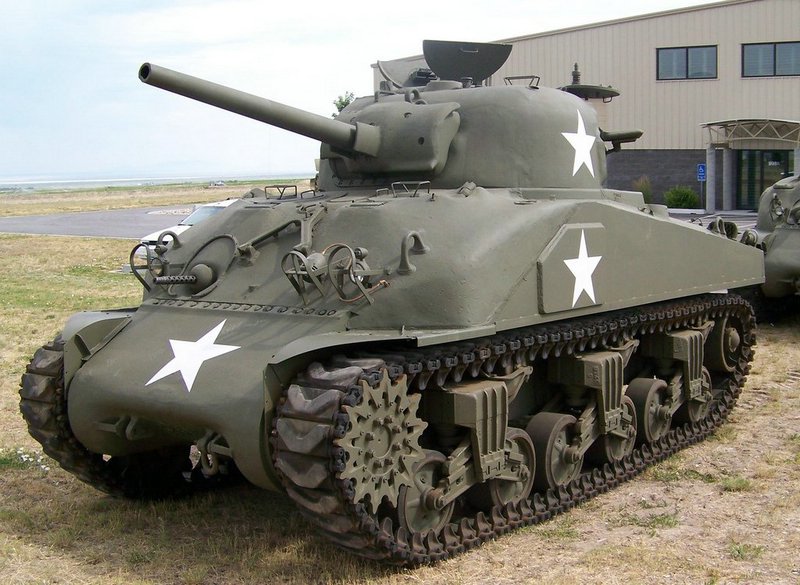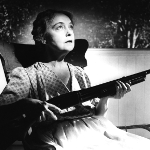|
Tias posted:Well done! It's a 'measuring block/stave' for cannon loads! L is for 'ladning' or charge, and the rest are weight/caliber and type of cannon Anyway, here's an artillery slide rule designed for computing stuff. It's a Pickett Model 14. This basic design was introduced in the '40s--the earliest reliable date I can find is September 1945, which is the date on War Department technical manual TM 6-240 Rule, Slide, Military, Field Artillery, With Case, 10-Inch. Anyway, this one is probably made in the early '60s:  That's the case, the slide rule, and a strip of plastic with several figures (from the manual) to aid in basic trig computations. The rule itself is double-sided, and the side that isn't showing has the scales you'd expect to find on any vectorlog slide rule of the era (LL1, LL2, A, [ B, T, ST, S, K, C ], D, LL3, LL4, if you're familiar with slide rule scales). The atypical stuff on the side shown here are the scales for converting between degrees and mils, as well as metres and yards, along with opposite/apex angles, and the range-finding stuff along the bottom of the stator (which works like a normal multiplication scale on a slide rule but which is labelled differently). The original version of this rule of this rule (from the '40s) was single-sided with a reversible slide--the stator had the DEG/MILS scale at top and the D (labelled Range instead of Distance) and A scales at the bottom, and the slide could be inserted to use either: APEX ANGLE, CI, C (labelled Base); or TAN, SIN-TAN, SIN, C. Instead of being a separate insert, the diagrams were printed on the unused back of the rule. The manual covers basic slide rule mathematics in addition to explaining the use of the special scales. It has a bunch of artillery-specific problems and examples, including the obvious geometry/trig problems starting from different givens/unknowns, converting range and bearing data into coordinates, converting azimuths into bearings, doing full station-to-station traverses, range-finding based on timing the arrival of sounds (e.g. of shell bursts or gun discharges).
|
|
|
|

|
| # ? Apr 29, 2024 00:11 |
|
Fangz posted:What does this mean? https://www.youtube.com/watch?v=NqF_ETWvBCA So (just a WAG) they likely made the traverse equipment to a cruder set of clearances/tolerances for the gears/screws, so bigger gaps means you get a less rigid mount.
|
|
|
|
Tulip posted:It's possible that the character order is weird because Japanese changed a lot since WWII but it looks like the characters are in the right order but individually upside down, since 軍事秘密 is "military secret" but afaik 密秘事軍 doesn't mean anything. When you see a single row of Japanese text that appears to be in reverse order, it's because it's top-to-bottom, right-to-left, but wrapping after each character. Confused the gently caress out of me the first time I saw it on some stall banners at a festival.
|
|
|
|
SubG posted:Rule, Slide, Military, Field Artillery, With Case, 10-Inch Where, when and how did this naming scheme originate? I haven't really seen it used anywhere outside of the military context but absolutely loved in when I was in charge of the platoon CP and the associated equipment. All the check lists were so wonderfully easy to use when alphabetized in this way. It's especially hilarious in Finnish, where long compound words are the norm. The FDF was recently looking for a "vastatykistömaalinosoitustutkakalustojärjestelmäinsinöörierikoisupseeri", roughly translating as "counter-artillery target designation radar equipment system engineer special officer".
|
|
|
Loezi posted:Where, when and how did this naming scheme originate? I haven't really seen it used anywhere outside of the military context but absolutely loved in when I was in charge of the platoon CP and the associated equipment. All the check lists were so wonderfully easy to use when alphabetized in this way. It’s inventory tables. If you write everything out like that then you can find all the rulers and dig down from there.
|
|
|
|
|
Yeah, the Danish military has everything like that, for example tube, 150mil shell, for the firing of, my favourite being: Knife, killing
|
|
|
|
TK-42-1 posted:It’s inventory tables. If you write everything out like that then you can find all the rulers and dig down from there. Tables, inventory.
|
|
|
|
RocknRollaAyatollah posted:
Nah. Or rather, over-simplified. In Chinese if you're writing a letter it's shrug-emoji either one. If it's a novel it's going to be vertical right-to-left. If it's stereo instructions or something it's gonna be horizontal left-to-right. Random signs will either be one or the other and you kind of just got to figure it out and probably get garden-pathed ; if it's like an old temple it's probably right-to-left, if it's an electronics shop it's probably left-to-right and stuff in the middle you just have to stare at for 3 seconds. And last I was there (circa 5 years ago), the ROC was still pretty hard in setting in its heels against change.
|
|
|
|
So here's a question I've had rolling around my head for a while. Way back in undergrad, I had a class on the history of the US Army. For the most part I enjoyed the class and the professor, but during the section on World War II he made some very classic, very dumb comparisons between US tanks and German tanks, and then stated that the reason why the US Army had bad tanks was because they were all designed by government, while the reason we had good airplanes was because they were designed by the free market  Aside from this being, well, wrong (Which I clearly knew even at the time), it did get me wondering why it was that US tanks were government-designed while aircraft designs all came from private firms. Looking it up, it seems that most every other major power other than Japan (And, obviously, the USSR) contracted out AFV design to various private companies—see, for instance, Vauxhall designing the Churchill, Renault designing the R35, Krupp designing the Panzer IV, etc. And even in the USSR, tank design was contracted out to multiple different state-run firms, which were often in competition with each other. So why was it that the US, which quite obviously had no dearth of manufacturing firms and expertise, ended up designing most of its World War II-era AFVs directly through the Ordnance Department? While there were exceptions (Such as the Buick-designed M18 tank destroyer and the hilariously poor Marmon-Herrington CTLS), the M5 half-track, M3/M5 Light tank, M3/M4 Medium tanks, T26 heavy tank, and many more vehicles were all designed directly by the US Army Ordnance department. I've got my own thoughts on why this might be, but I'm wondering if anyone here has their own knowledge or conjecture on why the US ended up with this arrangement.
|
|
|
|
Moderately cool AMA happening over in the otherwise terrible reddit history thread: https://www.reddit.com/r/history/comments/lrgvep/hi_reddit_im_ty_seidule_historian_army_officer/
|
|
|
|
Acebuckeye13 posted:Looking it up, it seems that most every other major power other than Japan (And, obviously, the USSR) contracted out AFV design to various private companies—see, for instance, Vauxhall designing the Churchill, Renault designing the R35, Krupp designing the Panzer IV, etc. I mean you can re-write that as "the vast majority of tanks that fought in WWII were the product of a nationalised tank design..." Which I suspect would kinda point to the issue here. While the US had industrial expertise, they had almost no expertise at designing and building and operating tanks at the start of the war. So they had a crash course program aimed at producing tanks, lots of tanks ASAP, utilising lots of foreign experts. Fangz fucked around with this message at 19:46 on Feb 24, 2021 |
|
|
|
Fangz posted:I mean you can re-write that as "the vast majority of tanks that fought in WWII were the product of a nationalised tank design..." To add to this, it was much easier to announce a competition or list of specifications for desired aircraft, have the companies do all the work, and grant winners lucrative contracts that could guarantee that they would flourish, or at least ensure their survival. Economically, it makes more sense to let private companies do most, if not all, the work on their own dime and then pay them once its gets to the competition/contract stage. Depending on the cost or length of programs, you [the government] could pay for some prototype costs. I realize saying this in the golden age of Boeing or whoever else that milks billions, if not trillions of dollars, for what amounts to failed designs, because we've mostly passed the point of sustainable weapons development in certain regards.
|
|
|
|
Acebuckeye13 posted:Looking it up, it seems that most every other major power other than Japan (And, obviously, the USSR) contracted out AFV design to various private companies—see, for instance, Vauxhall designing the Churchill, Renault designing the R35, Krupp designing the Panzer IV, etc. And even in the USSR, tank design was contracted out to multiple different state-run firms, which were often in competition with each other. Don't forget that Soviets initially licensed many designs from foreign companies, including the two most numerous interwar types. T-27 from Carden Lloyd, T-26 from Vickers and BT from Christie. BT in turn influenced design for A-32 and then T-34.
|
|
|
|
American companies also, for instance, had a lot more experience building planes for civilian use than tanks for civilian use. You can basically (I know, I'm oversimplifying some), turn a commercial plane into a military plane by slapping machine guns on there, whereas, if you're an automobile manufacturer, you're not going to naturally be able to design a tank based on your automotive knowledge.
|
|
|
|
And a tank is basically a gun that's mounted on a tractor and has a bunch of steel plates welded on all over. So if you need to start from scratch the core of your team is the people you already have who make your guns, and they are the nucleus of your design project.
|
|
|
|
Fangz posted:I mean you can re-write that as "the vast majority of tanks that fought in WWII were the product of a nationalised tank design..." But you can't, because that's clearly not what happened (Unless you're putting every Sherman and T-34 in a bucket and weighing it against the rest of the world, which isn't useful or helpful at all). The Panther tank had its genesis via the VK 20 and VK 30 requests for proposals, which featured designs from MAN, Daimler-Benz, and Krupp. Ferdinand Porsche designed a proposal for the Tiger and infamously started building it before it turned out that Henschel's design had actually won (These tanks were later converted into the Ferdinand/Elefant tank destroyers). The British Cromwell tank started with design proposals from Vauxhall, Nuffield Mechanizations and Aero, and a joint Leyland/Birmingham Railway Carriage & Wagon proposal (Which was ultimately chosen). The Char B1 was a joint collaboration between Renault and Schneider-Creusot. Even in the USSR, the KV was chosen as the victor of a design competition between multiple state-owned factory design teams. So with all that in mind, my question really is, "In contrast with most other major powers, why did the US rely on a centralized design bureau to develop most of its AFVs during World War II?" That is what I want to know.
|
|
|
|
I would guess they figured “we can wait for all these guys to make proposals and then sift through them and refine it to what we want. or we can pull all of them into the same room and have them do it our way from the get go.”
|
|
|
|
|
Alchenar posted:And a tank is basically a gun that's mounted on a tractor and has a bunch of steel plates welded on all over. So if you need to start from scratch the core of your team is the people you already have who make your guns, and they are the nucleus of your design project. I have to strongly disagree with this. You do that and you get a self propelled gun at best or an utter failure of a tank at worst. A tank is (hopefully) a delicately balanced system where all factors are almost as important. Or there is a good doctrinal reason, eg. a cavalry tank sacrifices protection to gain operational mobility. Acebuckeye13 posted:So with all that in mind, my question really is, "In contrast with most other major powers, why did the US rely on a centralized design bureau to develop most of its AFVs during World War II?" That is what I want to know. At the offset of WW2 the US tank forces' pride was this beaut:  And there were like, dozens of them!!! United States wasn't planning on getting heavily involved in another big war in Europe, let alone one where tanks would be necessary, so there wasn't much of an industry around them, unlike in European countries. Then stories of Maybe it was also the best day to hand out the contracts fairly - if Ford Motor Company, General Motors or some other manufacturer had come up with their own blueprints for a competition, they probably would have leaned on their own manufacturing strengths in the details and this would have made it slower to convert other plants to make them? Maybe? I'm not an engineer.
|
|
|
|
It's not like Ford or GM had any particular expertise in designing armored vehicles. Assembling a tank isn't tremendously different from assembling a car, but designing a tank is very different from designing a car. If nobody has meaningful expertise, better to centralize that and control it as a single entity rather than trying to have a bunch of different entities develop that expertise in parallel.
|
|
|
|
Acebuckeye13 posted:So with all that in mind, my question really is, "In contrast with most other major powers, why did the US rely on a centralized design bureau to develop most of its AFVs during World War II?" That is what I want to know. Nearly all I know about this comes from more knowledgeable people ITT, but my impression is that this was the only way to get AFVs done in the numbers the USA knew would be needed for itself and its allies. Unlike aircraft, it's not like there were two or three companies making tanks for the global market, and even if they were, they would have been too small for the job ahead. The Sherman, for example, came with two different hulls, a turret with a new cast-in-one-piece method, and what, five different engines? There was also the matter that the ordnance board was the organization identifying benchmarks for what guns to build, and how those guns should perform. What AFVs to build was a logical extension, insofar as they were already set up for this sort of engineering. So, I think it's partially that America didn't do much in the way of AFVs pre-WW2, and a government organization that already was poised to take change.
|
|
|
|
Acebuckeye13 posted:So with all that in mind, my question really is, "In contrast with most other major powers, why did the US rely on a centralized design bureau to develop most of its AFVs during World War II?" That is what I want to know. So this isn't the only answer, but a big part of it is logistics. If US industry came out with a new fighter, or a USSR design bureau came out with a cool new tank, they could just slot that into their organization. However every tank in the US had to fit in a certain kind of rail car, then onto a certain type of ship, then onto a certain landing craft, then over certain types of bridges, etc. All those things had been decided way in advance, so even if someone came up with a cool new tank it would be a waste of time if it didn't slot into the entire existing planning. That's one reason why you see lots of applique poo poo welded to the front of Sherman's, but almost never to the sides. Because the side clearances were set in stone and could not be altered. So I'm sure there were some other reasons, but the logistics is one of the reasons for the central design, and also for the resistance to new designs. Now you can theoretically set out strict requirements and get civilian companies to compete, but there wasn't exactly a lot of time, and they had to get it right the first time. So it seemed better to just decide what they wanted and tell people to make it. It was a different war, but Moltke famously responded to the Kaiser's meddling in 1914 Deployments with: quote:“Your Majesty, it cannot be done. The deployment of millions cannot be improvised. If Your Majesty insists on leading the whole army to the east it will not be an army ready for battle but a disorganized mob of armed men with no arrangements for supply. Those arrangements took a whole year of intricate labor to complete and once settled, it cannot be altered.” And I feel like that's a good description of the US armored development policy. The numbers and types of tanks that would hit the beaches in 1944 were all decided upon years earlier, and there was not time to do lengthy trials between competing models. There were lots of competing heavy/medium tanks made, but few made it beyond prototypes or small production. SerCypher fucked around with this message at 23:35 on Feb 24, 2021 |
|
|
|
I don't know, it's not like you can't give out the required specs to independent design bureaus. All US Navy ships have to fit through Panama canal, it doesn't mean that only a US Navy engineer can figure it out.
|
|
|
|
Nenonen posted:I don't know, it's not like you can't give out the required specs to independent design bureaus. All US Navy ships have to fit through Panama canal, it doesn't mean that only a US Navy engineer can figure it out. Pretty sure US Navy ships were centrally designed too though. At least destroyers and up. I know less about naval stuff, but a cursory reading shows the requirements and basic designs were all done in house.
|
|
|
|
It depends on whether or not your industry has skill and experience in building what you want. If it does (i.e. the modern military industrial complex) then you put out a design spec and see what they come up with. If it doesn't then you either lead on design centrally, or you end up standing in a field next to Ferdinand Porsche looking at a 65 ton tank that doesn't have a machinegun.
|
|
|
|
Alchenar posted:you end up standing in a field next to Ferdinand Porsche looking at a 65 ton tank that doesn't have a machinegun. It looks hella cool though.
|
|
|
|
SerCypher posted:Pretty sure US Navy ships were centrally designed too though. At least destroyers and up. It was handled by the US Navy Bureau of Ships. Just before the war, you had two bureaus but they were merged into BuShips and they did the specifications and designs. Also all of the project management bits. Some designs like the Casablanca class escort carriers would have some hybridized design with the US Navy and the Kaiser Shipyards discussing how to make the designs using as much pre-fab and existing designs as possible. But the bulk of ships built during the war were done with BuShips designs. Letting every shipyard do their own thing would become a nightmare quickly.
|
|
|
|
SerCypher posted:It was a different war, but Moltke famously responded to the Kaiser's meddling in 1914 Deployments with: Apparently the German train timetable nerds were insulted by von Moltkes insinuation that the couldn't work out new plans on the fly lol
|
|
|
|
MikeCrotch posted:Apparently the German train timetable nerds were insulted by von Moltkes insinuation that the couldn't work out new plans on the fly lol I mean maybe they could. I think the WW2 Germany Army is a good point of comparison for a force that improvises and does almost everything by the seat of its pants on a strategic scale. When it works it works, when it doesn't work it really doesn't work. I wonder who would win between the two with similar equipment. My money is on the Imperial Germans.
|
|
|
|
Acebuckeye13 posted:But you can't, because that's clearly not what happened (Unless you're putting every Sherman and T-34 in a bucket and weighing it against the rest of the world, which isn't useful or helpful at all). Why not? Like that's the point I'm making, you've got a few designs made by centralised design bureaus that got loads and loads of units built, and then you've got dozens and dozens of mostly crummy, often over-complicated designs that got a small number of runs. EDIT: Look not at "isn't it weird how the US had centralised design", look at e.g. how the British centrally designed the WWI tanks, and developed a sizable private sector tank design and manufacture industry between the wars. Look at why the Germans turned to the private sector to secretly design "Large Tractors" during the interwar years. Fangz fucked around with this message at 02:17 on Feb 25, 2021 |
|
|
|
SerCypher posted:That's one reason why you see lots of applique poo poo welded to the front of Sherman's, but almost never to the sides. Because the side clearances were set in stone and could not be altered. My dude, Sherman hull applique armor reinforcements were added, then standardized:  Edit to add: Also, Shermans got wider when they got different suspensions. Check out this "Easy 8," it's a lot wider than prior Shermans. You can see how the tracks got wider and the hull now has track shrouds: 
Cessna fucked around with this message at 02:33 on Feb 25, 2021 |
|
|
|
Fangz posted:Why not?
|
|
|
SerCypher posted:I wonder who would win between the two with similar equipment. My money is on the Imperial Germans.
|
|
|
|
|
SerCypher posted:I mean maybe they could. Interestingly I ran into an argument about this recently - apparently the consensus among current WW1 specialists is that they very likely could have but Moltke was opposed to the change of plans for other reasons and "can't" is a good substitute for "won't" when arguing with a superior.
|
|
|
|
Cessna posted:Edit to add: Also, Shermans got wider when they got different suspensions. Check out this "Easy 8," it's a lot wider than prior Shermans. You can see how the tracks got wider and the hull now has track shrouds: In addition to "We spec'd out manufacture of Shermans to many other companies and got the quality control to work" as tremendously impressive, there's also how aggressively the drat things were upgraded when flaws were discovered, which was also tremendously impressive. Consider the 75/76mm gun change, and the fact it got implemented in the later part of 1944, in the middle of a war
|
|
|
|
Cessna posted:My dude, Sherman hull applique armor reinforcements were added, then standardized: I probably should have been more specific. I meant things like armor skirts. The applique armor patches don't really increase the width. Armour skirts would have helped a lot during the bocage portion of normandy due to how common panzerfausts were. They were willing to weld dozers and spikes on the front of Shermans, but anything substantial on the sides was not allowed unless it was removeable. Hence the logs and such. You also see concrete armour but it usually doesn't stick out further than the sand guards.  The applique armor didn't really increase the profile, just the weight, so it was fine. You're obviously correct that the later Shermans were wider, up until then though every variant had essentially a 105 inch width limit. http://afvdb.50megs.com/usa/m4sherman.html The Jumbo was a little wider but I guess they made allowances as it was a special variant. There are some exceptions, but outside of temporary attachments like logs, most of the improvised armour on shermans is completely flat and doesn't extend over the tracks at all. Everything I have read has indicated that's for clearance reasons. Supposedly officers would turn a blind eye to stuff on the front, but were extremely strict about anything on the side. Edit: I don't know what changed that convinced them to widen the sherman for the HVSS version. Maybe after a while they just decided to accept the drawbacks and sacrifice transportability for a more capable vehicle. SerCypher fucked around with this message at 03:03 on Feb 25, 2021 |
|
|
|
Those are rookie numbers  There's no shortage of wide Shermans, although yes, width was a factor (particularly the width of the Bailey Bridge).
|
|
|
|
Got a bit of an antique here. WWI era US bayonet.    Please ignore my bad photography skills. The finger in the third image is particularly choice. Two questions: Any idea what the symbols in the fourth image mean? I'm assuming some sort of unit or armory mark. Second, any times on care and upkeep? I'd hate to have it rot/rust away. It's been stored in a pretty dry area, but not that it's with me it's in a place with a bit more damp.
|
|
|
|
That's pretty stonking cool! Is it an old relative's or what? For upkeep, step 1 is oiling the absolute poo poo out of it, especially how it is now. Sit down with like a long movie or podcast or something, a big bottle of oil* and lots of paper towels and rub it like a 13 year-old left alone with broadband. I can't tell from the photos but it's possible it might be bad enough that you need to very carefully take off some of the rust with a bit of sand paper. Hopefully not. After you get the worst of it off, you just gotta re-apply a bit more quick every once in a while. If you're trying to keep an edge on it, I don't know how comfortable you are sharpening things/how dull it is, but you can probably find someone with a grinding wheel who'll do it for a song. *giant argument about what oil is best here, but like olive oil is fine
|
|
|
|
Xiahou Dun posted:That's pretty stonking cool! Is it an old relative's or what? Yes, from my granddad. He was a historian and not a vet. No clue how he got it, but he did a lot of work in France and Germany so I assume he picked it up then. He had a lot of knickknacks in general.
|
|
|
|

|
| # ? Apr 29, 2024 00:11 |
|
the JJ posted:
Can't tell what the one on the left is, but the symbol in the center is the burning shell of the Ordnance Department.
|
|
|










































